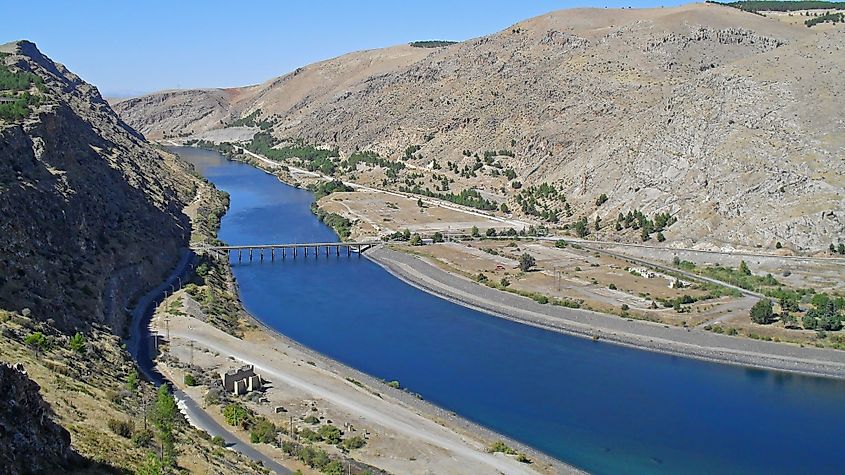
Fertile Crescent
The Fertile Crescent, also popularly referred to as the Cradle of Civilization, is a quarter-moon-shaped region in the Middle East that begins from the Persian Gulf and runs through present-day Iraq, Israel, Syria, Jordan, Lebanon, and Egypt. The region is considered the birthplace of several technological advances, including literature, writing, irrigation, agriculture, glass, and the wheel, among other innovations.
The innovations stemmed from the ancient Levant and Mesopotamian civilizations, including Sumerians, Egyptians, Babylonians, Phoenicians, and Assyrians. The Fertile Crescent contained abundant fresh water and fertile soil that supported edible plants. This is where ancient people began transitioning from hunting and gathering to permanent cereal and grain planting.
Origin Of The Name

James Henry Breasted, an American Egyptologist, coined the name “Fertile Crescent” in 1914 and popularized it in his works: Ancient Times: A History of the Early World and Outline of European History. Breasted described the Fertile Crescent as a downward-facing semi-circle with the west end at the Mediterranean’s southeast corner and the east end at the Persian Gulf’s northern end. The crescent’s center is directly on Arabia’s north. The western end also included Palestine, while Babylonia covered much of the eastern end. Since the region described by Breasted had no political or geographical name, he baptized it as “Fertile Crescent". The present-day region includes Egypt, Iraq, Israel, Jordan, Lebanon, Palestine, Syria, and part of Iran and Turkey.
Cradle Of Civilization
The Fertile Crescent, popularly referred to as the "Cradle of Civilization", is the birthplace of several civilizations, including trade, agriculture, writing, urbanization, history, science, and organized religion. The region, populated initially by hunters and gatherers, was the first to plant crops and domesticate animals. The region’s climate and geography favored agriculture, forcing most hunter-gatherers to shift to draw their livelihood from the land. Although the climate was semi-arid, proximity to the Nile, Euphrates, and Tigris Rivers encouraged agriculture.

Agricultural Revolution began in Mesopotamia, a historical region lying between the Euphrates and Tigris Rivers (present-day Iraq and parts of Syria, Kuwait, Iran, and Turkey). Mesopotamians began practicing agriculture around 10,000-9,000 BCE. They domesticated several crops, including barley, wheat, lentils, and flax, and developed temples, pottery, banking system, property ownership, and irrigation. Trade routes also developed in the region, forming long-distance travel to the Kingdom of Kush and the Kingdom of Saba.

Sumer civilization emerged around 5,000 BCE near the lower Tigris-Euphrates River Valley, with the Sumerians establishing several city-states, including Uruk and Eridu. It is the world’s first known civilization. The Sumerians may have been the first people to use bronze levees and irrigation canals. They also invented the earliest scripts and writing techniques. Some of the archaeological remains include the Ziggurat of Ur, a massive temple in Iraq that gives a glimpse into Sumerian architecture. Other sites include Babylon City, Hattusha, and Persepolis.
Present-Day Fertile Crescent

The present-day Fertile Crescent is not as fertile as it was in ancient times. In the mid-20th century, water from the famous Euphrates River and Tigris River were diverted for large-scale irrigation, resulting in the drying up. In the 1990s, the Iraqi government drained the marshes to cut off water supplies to Marsh Arabs who cultivated rice in the region. According to NASA satellite images, up to 90% of the previous marshland had turned into desert. Besides human activities, climate change also contributed to the drying up of the once fertile region.











